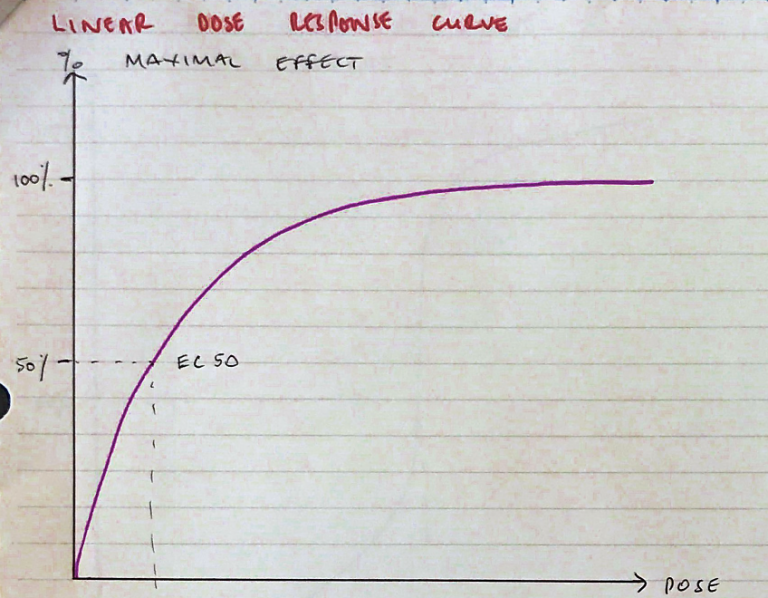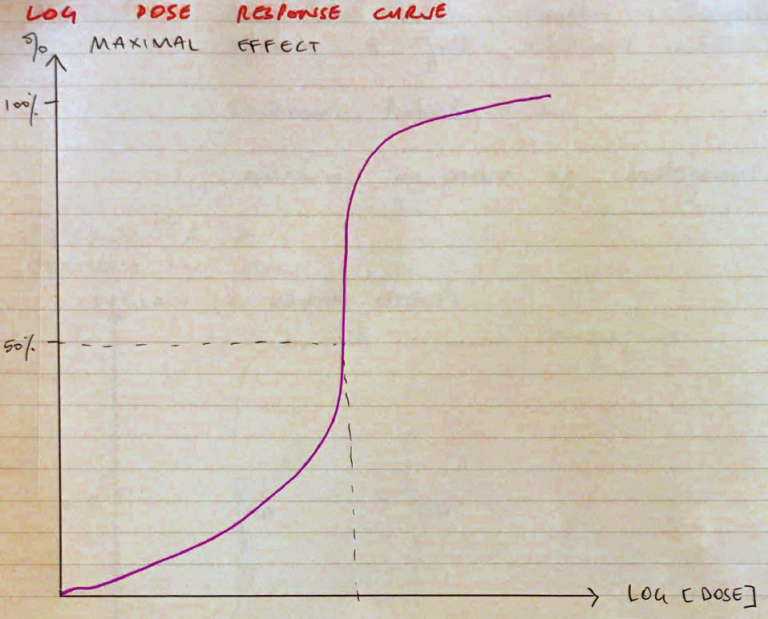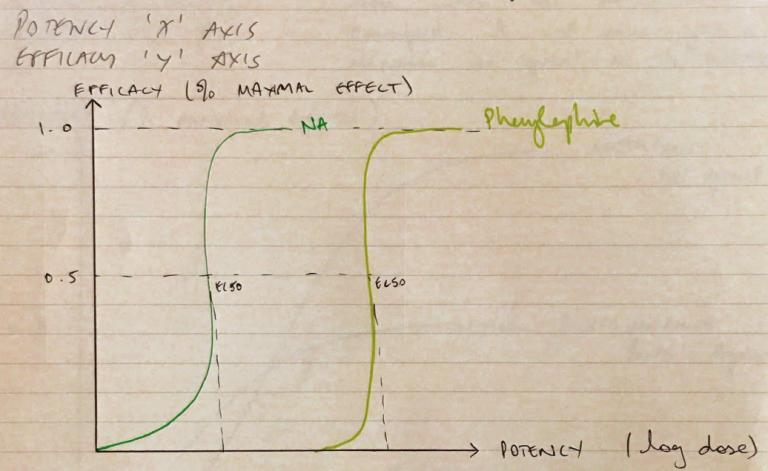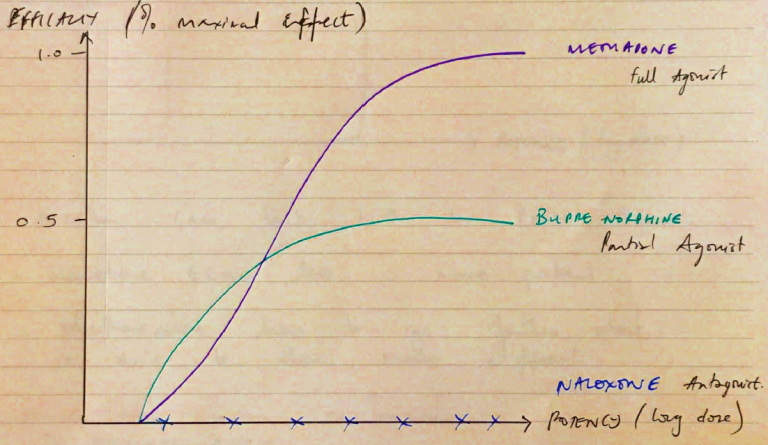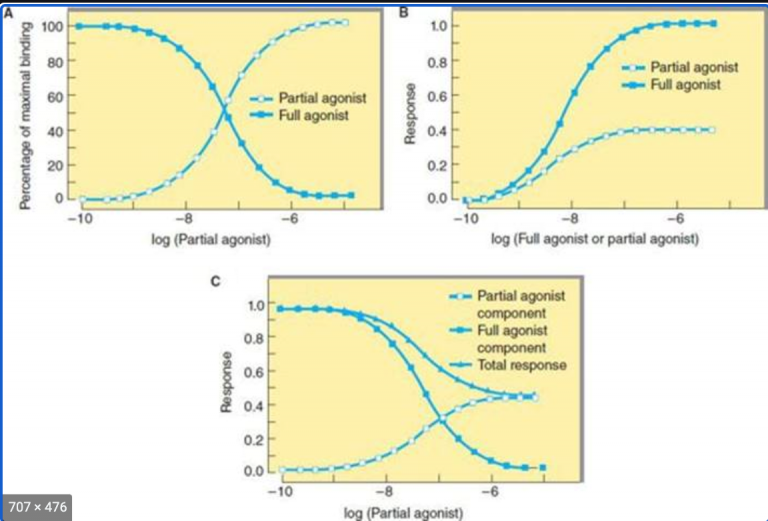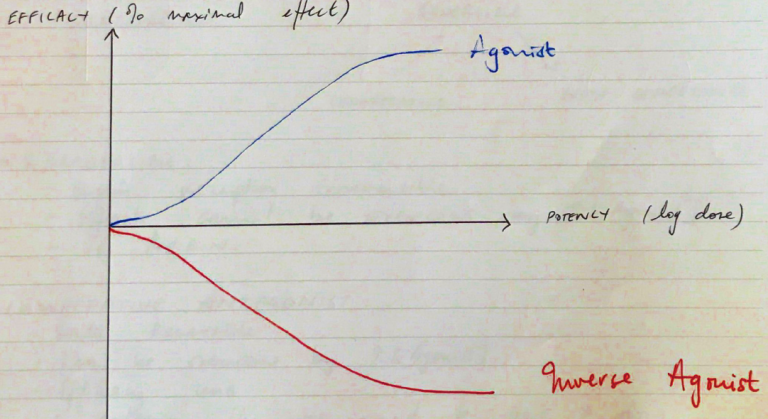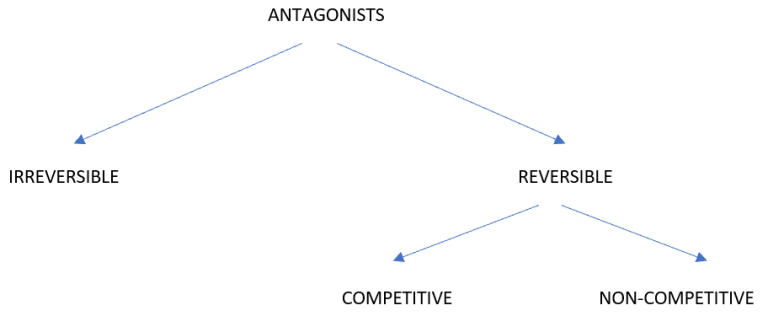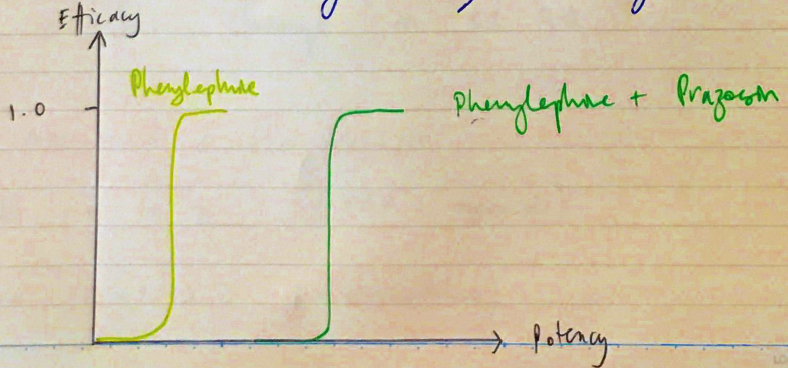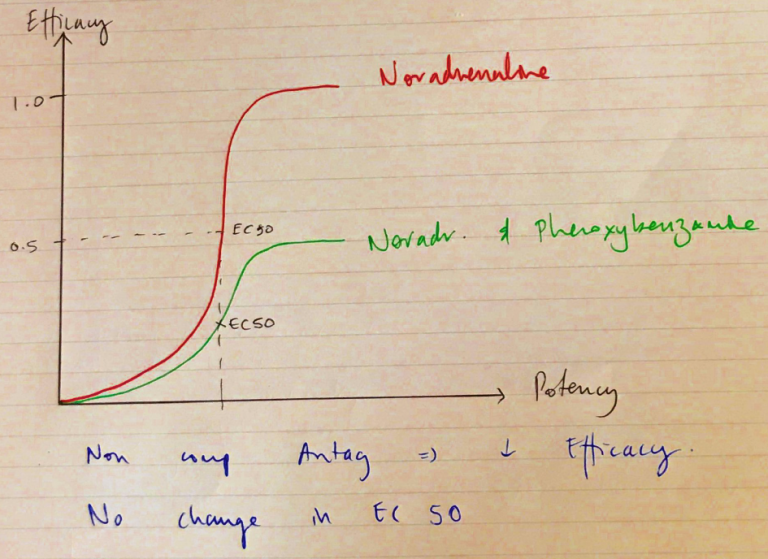Cii: To define and explain dose-effect relationships of drugs, including dose-response curves
Graded Dose Response Curves
- As drug [ ] ↑= pharmacologic affect ↑
- Response is continuous & gradual, as opposed to quantal, which is all-or-nothing
- ED50 = median effective dose → the dose of a drug that induces specific response in 50% population taking it
- EC50 = median effective concentration → the [ ] of a drug that produces a specific response half way b/w baseline (zero) & maximal (100%) response
- Potency = measure of quantity of drug needed in order to produce maximal effect e. if you need a large dose for maximal effect, drug is not v. potent
- To compare potency, compare ED50 or EC50
- Efficacy (intrinsic activity) = the ability of the drug to illicit a physiological response when it interacts with receptor
- Maximal response = EMAX
- At zero, drug [ ] = no response (0% max effect)
- By ↑drug dose, % max effect ↑
- Until we reach maximal effect at which no extra ↑dose will have effect (100%)
- We use log [dose]
- Because spreads out the low dose of the curve, where the most important things are happening
- ∴magnifies the little dose where you expect to see $$$
- Scale is SIGMOID
- Steep part = linear
- ED50 is a linear part of curve → makes assessment of dose-responses easier to see
- But makes it difficult at top to compare maximal response b/w agonists/antagonists
Partial Agonist= drug with high receptor affinity but an intrinsic activity <1.0
- Intrinsic activity b/w 0 and 1
- Even when all receptors occupied, it will never give a response as great as the Full Agonist
- Neither can hit 1.0 because partial agonist
- Clonidine EC50 less ∴more potent
- Methoxamine has to go further along x axis to show more effect
- Partial agonists can act as Antagonists
- If you were giving maximal dose Methadone & added Buprenorphine, Buprenorphine would be occupying some receptors but not giving the full 1.0 response that Methadone would
- So partial agonists always fail to produce maximal effect even at v. high doses
Antagonist
- ∴when binds receptor → no effect mediated
- Intrinsic activity = 0
- IRREVERSIBLE
- Binds receptor irreversibly
- Effects cannot be overcome by ↑[agonist]
- e. ASPIRIN
- COMPETITIVE ANTAGONIST
- Binds reversibly
- Can be overcome by ↑[Agonist]
- Efficacy unchanged
- ↓potency because you need to give ↑dose of agonist for same effect
- NON-COMPETITIVE ANTAGONIST
- Binds at another site to receptor & ∆conformational shape so that agonist cannot bind
- Effectively ↓no receptors
- You can’t overcome by ↑[agonist]
- Depresses efficacy → because for more effect you need all receptors available
Additive & Synergistic
- Additive 1 + 1 = 2 (PPF + opioids)
- Synergistic 1 + 1 > 2 (volatiles)
